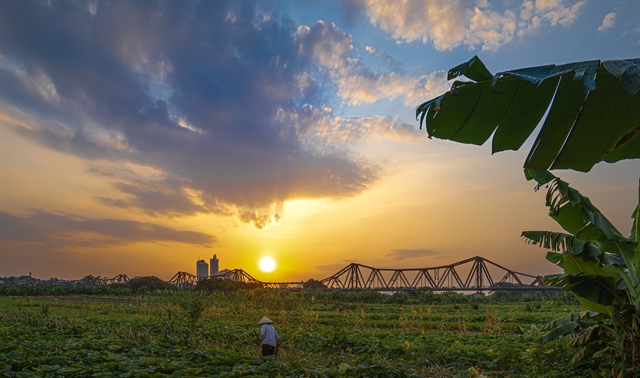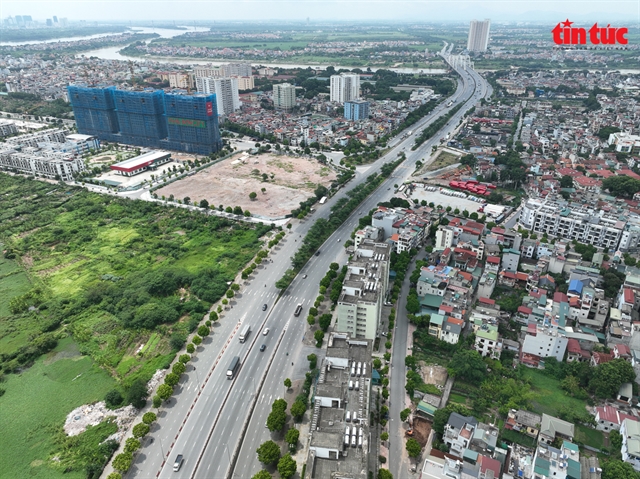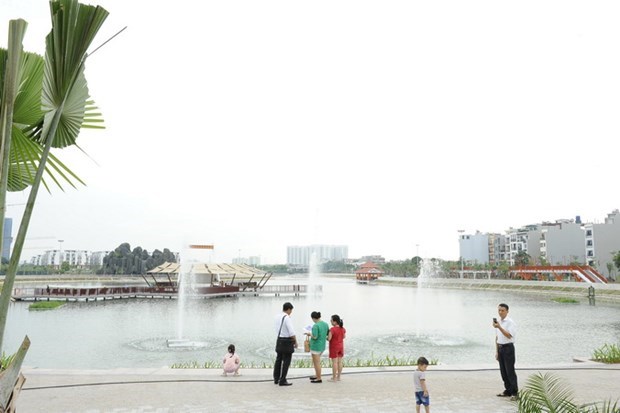 Society
Society

 |
| Long Biên Bridge in Hà Nội. — VNA/VNS Photo |
HÀ NỘI — Long Biên District of Hà Nội is poised to transform into a desirable locale founded upon four central pillars: knowledge, environment, health, and culture, said Nguyễn Mạnh Hà, the chairman of the district People’s Committee.
Previously an undeveloped district situated in the capital's northeast, Long Biên has ascended to prominence in terms of strategic planning, urban administration, and administrative innovation.
Conceived in 2003, the district underwent vigorous planning initiatives by local governance as a strategic move to transcend its underprivileged condition.
Subsequent to its inception, the local authorities resorted to borrowing from the State budget to undertake comprehensive planning. From its earliest days, the district was receptive to innovative and imaginative planning proposals.
Merely two years following its formation, Long Biên District completed a detailed 1/2000 scale planning map delineating land utilisation, transportation networks, and technical infrastructure.
To date, the district has unveiled 60 planning initiatives and ratified 236 meticulous schemes. Such strategic planning efforts have allowed Long Biên, despite initially modest investment resources, to develop foundational infrastructure including electrical grids, roadways, educational institutions, stations, floral displays, and parks, catalysing its transformation from a rural to a rapidly urbanising district.
The district now boasts burgeoning urban developments such as Việt Hưng Urban Area, Sài Đồng, Bồ Đề, Thạch Bàn, Vinhomes Riverside, Rice Home Red River, Hanoi Garden City, Vinhomes The Harmony, and Berriver Long Bien.
Emerging as a “new centre” of Hà Nội, Long Biên has grown into an inviting and liveable hub, drawing a substantial influx of inhabitants across the Red River, thus aiding in the alleviation of population density within the city's core.
 |
| The district's infrastructure has received huge investment. — Photo baotintuc.vn |
Long Biên has truly become one of the busiest and bustling places in the capital.
Thanks to the infrastructure framework invested in synchronously, the district has attracted investors and created a huge source of revenue for the budget.
In 2021, Long Biên was one of the city’s units having the highest collection revenue with nearly VNĐ13 trillion, 48 times more than the first day of establishment.
The district was home to over 10,000 businesses and 10,000 individual business households. Among them, there are many large economic corporations.
This has proven the district’s attractiveness and strong growth.
In 2022, under the profound impacts of the COVID-19 pandemic, the district still achieved revenue of VNĐ11.3 trillion.
Long Biên District has for years led the city’s ranking in administrative reform, focusing on training officers, standardising administrative procedures, and applying information technology.
Hundreds of administrative procedures have had their handling time shortened by one to 20 days.
Since 2016, the district has piloted level 3 online public services in civil status justice, urban management, culture, and sports.
Many other localities have learned from Long Biên’s administrative reform model to better serve people and businesses. Long Biên is the first district in the city to provide 100 per cent voluntary social insurance assistance for poor and near-poor households.
Developed into a role model district
 |
| Ngọc Thụy Lake, one of the district's open spaces. — VNA/VNS Photo |
Hà Nội is adjusting the capital's general planning towards 2045 with a vision to 2065. This is a new opportunity to develop Long Biên into a new centre on the riverbank.
During a working session with Long Biên District’s authorities in early 2021, National Assembly Chairman Vương Đình Huệ, then Secretary of the Hà Nội Party Committee, emphasised that the district must build and manage urban areas towards green, smart, modern models, striving to become a role model district of the city.
Architect Vũ Hoài Đức said there was a lot of room for Long Biên to meet the expectations of the Party, State and city leaders.
He said the district could make use of and call for investment in 2,250 hectares of land outside the dyke, which accounts for 37 per cent of the district's natural land.
“Long Biên needs a specific development programme and to preserve the Red River green corridor area,” he said.
According to Dr. Phạm Anh Tuấn, head of the Department of Landscape Architecture at Hanoi University of Civil Engineering, if Long Biên develops the area along the Red River, it improves not only the quality of architectural space but also the climate, allowing narrow inner-city communities to be able to cross the river to enjoy more outdoor living space.
Long Biên District should encourage people to plant trees and create green street landscapes for the city, he said.
Nguyễn Mạnh Hà, Chairman of Long Biên District People's Committee, said the district was accelerating the progress of a number of projects such as Trần Hưng Đạo Bridge; Giang Biên Bridge; An Lạc centralised wastewater treatment plants and proposed city’s authorities relocate polluted production facilities out of the area.
Secretary of the Hà Nội Party Committee Đinh Tiến Dũng said the city would choose Long Biên as one of the priority places to address the city's new issues in various fields, and assigned the district to be the investor of new projects. — VNS




